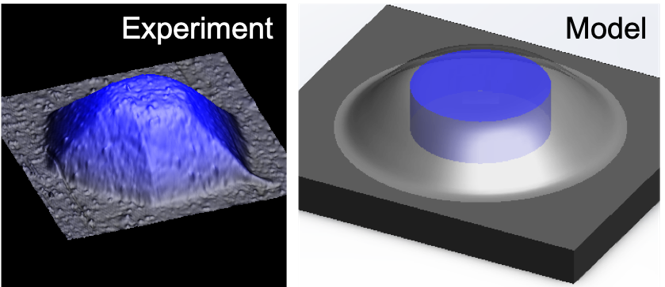
We have developed and validated a model which predicts size-independent shapes of metal nanoparticles that are supported on a solid surface and blanketed by a two-dimensional material such as graphene. This work lies at the fertile intersection between nanoscience and quantum materials where spatial dimensions can have profound effects. For example, the results may aid designingn ano-scale electrical contacts and heat sinks in electronics that use two-dimensional quantum materials. The model addresses puzzling observations based on our extensive measurements of the shape of copper and iron nanoparticles encapsulated near the surface of graphite. An important new insight is that the top graphene blanket resists deformation, and “squeezes” downward on the metal cluster. This forces the cluster to be extremely low and broad, compared with the shape it would have in the absence of such a blanket. Also, the prediction of size-independent shape (above a critical minimumheight ~10nm) is a new principle, analogous to the well-known and widely-used “equilibrium crystalshape” principle for naked (unblanketed) clusters.
Scott E. Julien, A. Lii-Rosales, Kai-Tak Wan, Yong Han, Michael C. Tringides, James W. Evans, and Patricia A. Thiel, “Squeezed Nanocrystals: Equilibrium Configuration of Metal Clusters Embedded Beneath the Surface of a Layered Material”. Nanoscale, 2019,11, 6445 -6452: https://doi.org/10.1039/C8NR10549A.
